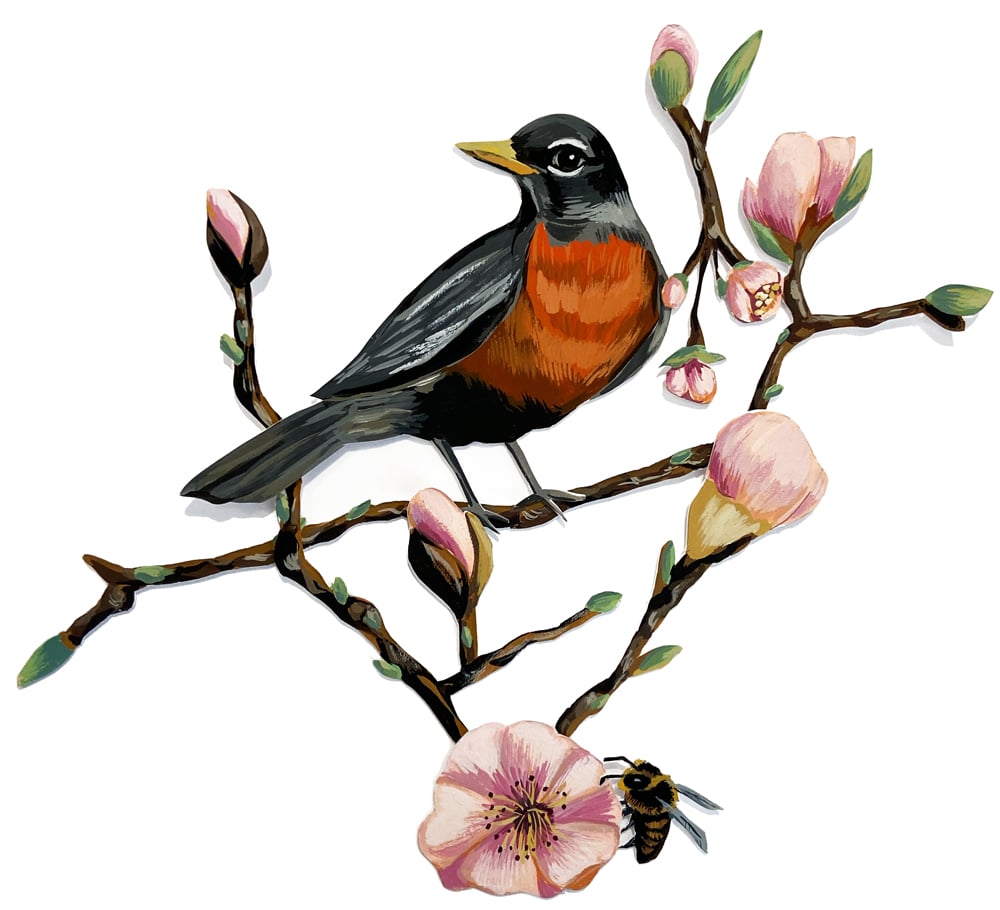Becoming a Flock | First Person
Watching the lives of birds can bring joy—and community—in a time when we need it most.

Becoming a Flock
Photo Credit : Kimberly Glyder
Photo Credit : Kimberly Glyder
It is late March 2020, and in Down East Maine, the nights are cold. The frog ponds freeze over with a thin glaze. The days, however, are longer and warmer, and the ponds melt back. Within these days and nights, the first birds from farther south return. A blast of robin song. A whispered warm-up from a purple finch. A song sparrow, from deep in the forsythia, strikes up a bar and lets it fade. Buffleheads, buoyant little ducks, are staging together out in the bay, getting ready to head inland, and the birds that have spent the winter alongside us—the nuthatches, juncos, and chickadees—tune up their noisy extravaganzas.
But this particular spring also initiates a different kind of season. We wake up to reports of illness and death. We go about making coffee. We tidy up. All together and all apart, we take in the incomprehensible news of our own species, and begin our solitary hours.
My house sits at the end of a long driveway, in the woods with a field in front, on a road where neighbors, for years, have gathered together for picnics, a Saint Patrick’s Day party, or an especially good night to see the stars. Two weeks ago, we initiated the Social Distancing Bird Club. We’re a baker’s dozen, and we report what we see by email, a back-and-forth that has become a lively celebration of not only what it is to be neighbors in this scouring time, but a celebration of wild birds.
It doesn’t matter how much any one of us knows or doesn’t know about bird identification, because over the Internet we puzzle out together the songs, sightings, and behaviors we encounter on our walks alone or what we see from the windows of our homes. One of us heard a ruffed grouse drumming in the woods yesterday. A few have seen bluebirds. No warblers yet. No vireos. No hermit thrushes or tree swallows. No hummingbirds or common terns. Spring is still to come.
The wild birds of Canada and the United States are having their own pandemic. Theirs has gone on longer than ours. Individuals lost to pesticide poisoning, habitat destruction, and climate change in the past 50 years number close to three billion. That number stuns. When I was first learning about wild birds, I had to practice patience, and focusing my attention, and let wild species take their time doing what they do. That’s how one becomes a birder. And a witness. Becoming a witness changes how you feel about what you see and hear. It happens when a detail from a bird’s life lives on in your imagination. You choose to carry it against despair and for the spark of joy it offers.
In our neighborhood in these damp, changeable days of late March turning into April, we’re clear about some things. One is simply that we’re all in this together, the birds and ourselves. We don’t have to figure out what use a robin or a grouse is to our small community. They owe us nothing. We, on the other hand, owe them quite a bit. Perhaps, when we resume our lives, we won’t forget this cloistered time when we stood at our windows more than we used to and saw life go on despite crushing losses, despite fear: We see mating chases through the branches of the softwoods. We observe a bit of nest-building as a mourning dove and a dark-eyed junco search for materials; the female dove for light, thin sticks, the female junco for pliant last year’s grasses. We watch the blue jays stream through in raucous bands, thuggish and beautiful, and the Cooper’s hawk shoot across the yard, which makes everyone stop, go still.
This morning a black-capped chickadee pair is checking out the birdhouse by the upper frog pond. I’ll add them to the email thread of the day very soon. Right now, I just want to watch.


